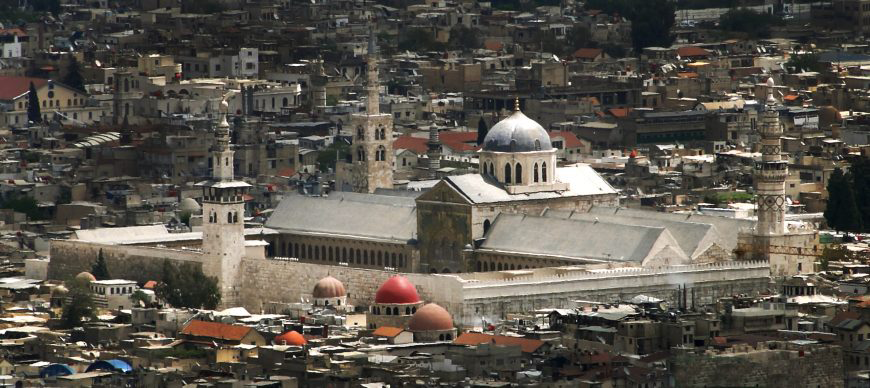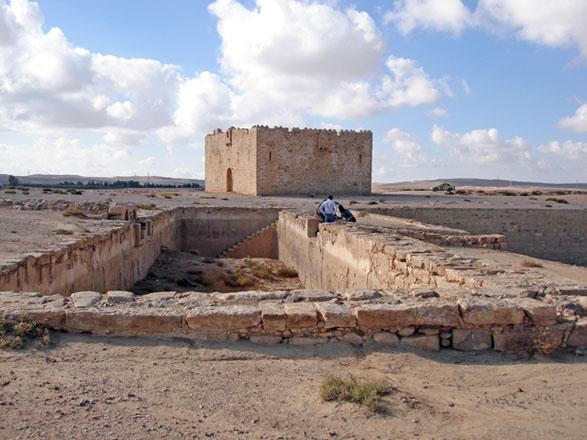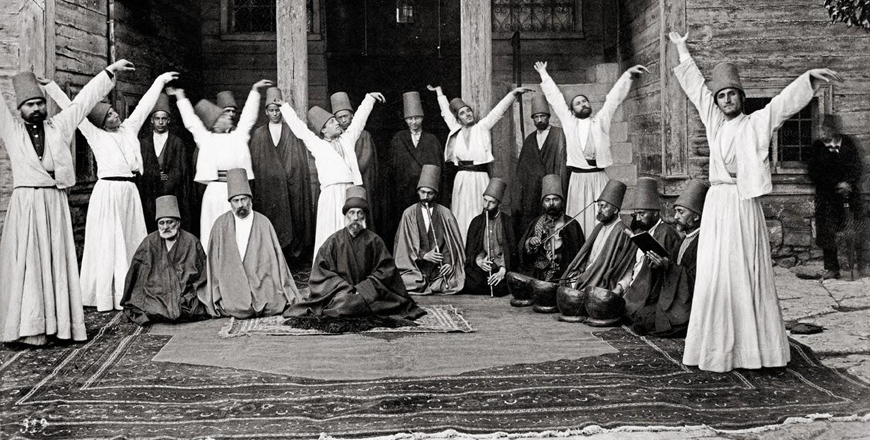You are here
Facilitating pilgrims’ progress ‘compulsory’ for ancient Muslim rulers, says Oxford archaeologist
By Saeb Rawashdeh - Dec 06,2022 - Last updated at Dec 06,2022

A distant view of the Great Mosque of Damascus (Photo by Bernard Gagnon)
AMMAN — The first caliphs were known for building mosques and rest-houses for the pilgrims, Claudine Dauphin, an archaeologist affiliated with Somerville College, Oxford, said in a recent interview with The Jordan Times.
“Caliph Omar modified the holy compound [haram] of the Ka‘aba, and Uthmân enlarged the mosques of Medina and Mecca. The transfer of the caliphate from Medina and Hijaz, first to Iraq under ‘Ali, then to Damascus under his successor Mu‘âwiya Ibn Âbi Sufyân [661AD-680 AD], Muslim governor of Syria since 639 AD and founder of the Umayyad dynasty, increased the importance of the trip to Mecca,” the archaeologist said.
In 695 AD, Caliph Abd Al Malik Ibn Marwân (685 AD-705 AD) decided to go on pilgrimage himself, while his son and successor Al Walîd I (705 AD -725 AD) went on Hajj only once in 710 AD. However, he gave orders to dig new wells in Hijaz, to clear roads crossing mountain passes and to improve the water supply of Mecca, Dauphin said, adding that the last of the great Umayyad caliphs, Hishâm Ibn Abd Al Malîk (724 AD-743 AD) went on Hajj in the second year of his reign, along with 600 camels to carry his luggage, and ordered the building of aqueducts and water reservoirs along the road from Damascus to Mecca.
“Facilitating the pilgrims’ progress had become compulsory for the Muslim ruler,” she added.
In 750 AD, the Umayyads were replaced by the Abbassids, and from Humayma in southern Jordan, they transferred their centre of power to Iraq, Dauphin said, According to the scholar, the official Hajj pilgrimage caravan, under the patronage of the caliph, departed from Kufa and then to Baghdad, the new capital of the Abbassid caliphate.
“Hajj scholars have taken for granted that the earliest Umayyad Hajj road was identical to the later Mediaeval road [Abbassid to Mamluk] on the strength of it skirting three Umayyad castles [Qar Mshatta, Khan Al Zabib and Qastal], and crossing the extensive Umayyad settlement at Maan,” the archaeologist highlighted, adding that an early Islamic papyrus, however, describes Caliph Mu‘âwiya Ibn Abî Sufyan ( 661AD-680 AD) as intending to travel on the Darb Al Hajj from Damascus to ‘Ayla (modern Aqaba), and ordering the Egyptians who wished to go on pilgrimage to meet him there.
Consequently, the course of the Umayyad Darb Al Hajj either was not that of the Mediaeval road, or if partly, included a branch heading to Aqaba, Dauphin said.
“We knew the courses of the Mediaeval and Ottoman Hajj roads in Jordan and we had even discovered their pilgrim camps,” Dauphin said, adding that despite the fundamental role of the Umayyads in shaping the Hajj, owing to the absence of Umayyad travelogues, scholars had no idea as to the actual course of the Umayyad Hajj road apart from the fact that the Umayyad road was distinct from the Mediaeval road.
“Was it a remnant of the Byzantine road network? Did it include a stretch of the Roman Via Nova Taiana?” Dauphin asked.
Related Articles
AMMAN — Before large-scale development and air travel, the Hajj pilgrimage routes comprised mostly of dirt roads, but according researchers,
AMMAN — As a hafiz who recited the holy Koran by heart and was part of the clergy at the court of Ottoman Sultan Mehmet IV (1642-1693), and
Awqaf Minister Hayel Dawood met with Saudi Hajj Minister Bandar Bin Mohammad Bin Hajjar in Mecca on Wednesday and discussed ways to develop bilateral relations.

















